Key takeaways:
- Overcoming performance anxiety involves identifying personal triggers and developing coping strategies, such as visualization and breathing techniques.
- Starting with small audiences builds confidence and allows for personal growth by transforming fear of judgment into opportunities for connection.
- Seeking constructive feedback enhances skills and self-awareness, helping to turn criticism into valuable insights for improvement.
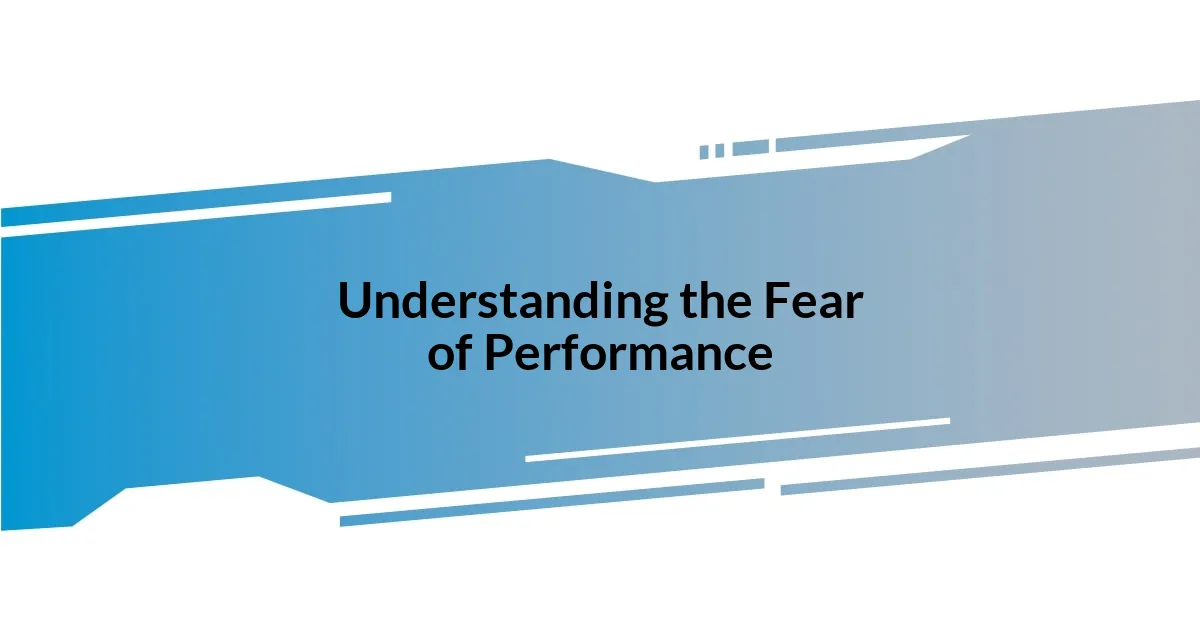
Understanding the Fear of Performance
Fear of performance is a common experience, rooted in vulnerability and the pressure of being judged by others. I remember my heart racing at just the thought of stepping onto a stage, my hands clammy, and my mind racing with negative “what if” scenarios. Isn’t it interesting how our minds can turn a simple moment into a colossal expectation?
As I delved deeper into my fears, I realized there’s often a mix of perfectionism at play. For instance, I’d meticulously rehearse every word, believing that anything less than flawless would lead to failure. Have you ever felt that urge to be perfect? It’s exhausting and can paralyze us from expressing our true selves.
Over time, I learned that this fear often stems from a fear of rejection or humiliation. The idea of others perceiving me as inadequate was daunting. I had to confront some tough questions: What would truly happen if I stumbled? When I finally accepted that mistakes are part of growth, I felt a weight lifting off my shoulders.
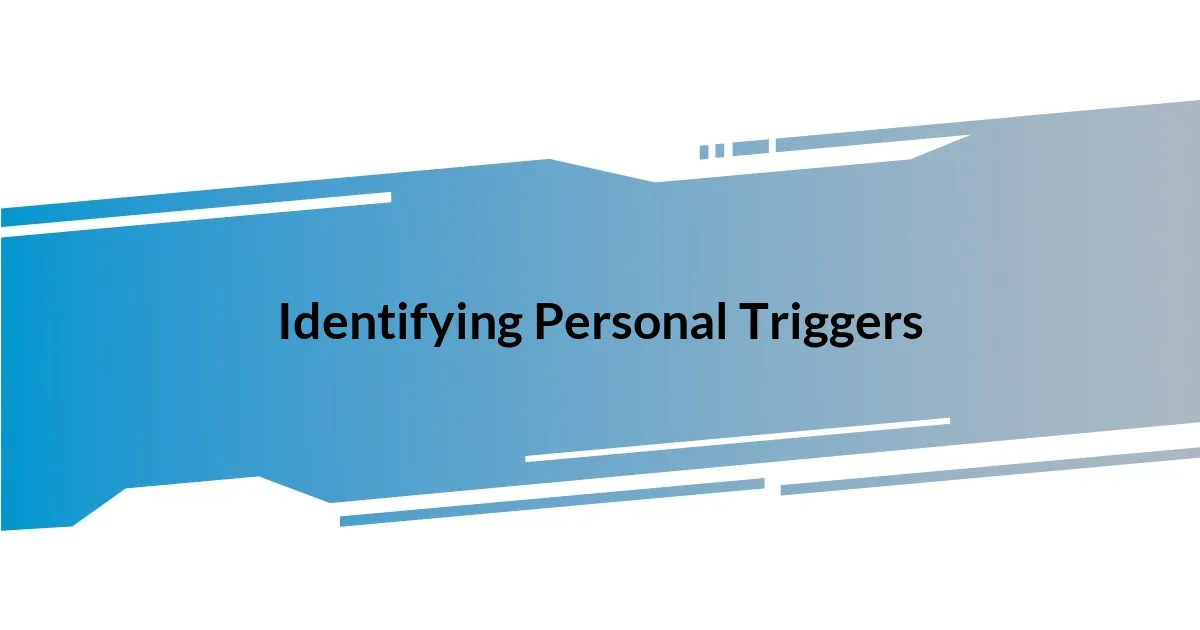
Identifying Personal Triggers
Identifying personal triggers is a key step in overcoming performance anxiety. For me, certain cues would send me spiraling into panic: the sight of a microphone, the smell of stage lights, or even the hum of an audience. Recognizing these triggers felt like shining a light in the darkness. Once I could identify them, I could begin to tackle my fear.
Here are some common triggers you might want to consider:
- Previous Negative Experiences: Reflect on times when things didn’t go as planned. How did that shape your current feelings?
- Physical Sensations: Notice your body responses. Do you clench your fists or hold your breath when you think about performing?
- Judgment and Criticism: Are there specific comments from others that replay in your mind? Identifying them can help you challenge those thoughts.
- High Expectations: Do you place undue pressure on yourself to impress? Acknowledging this can be liberating.
By pinpointing these triggers, a sense of control begins to emerge, easing the weight of apprehension. It’s a process, one that I found essential in my journey toward comfort and confidence on stage.
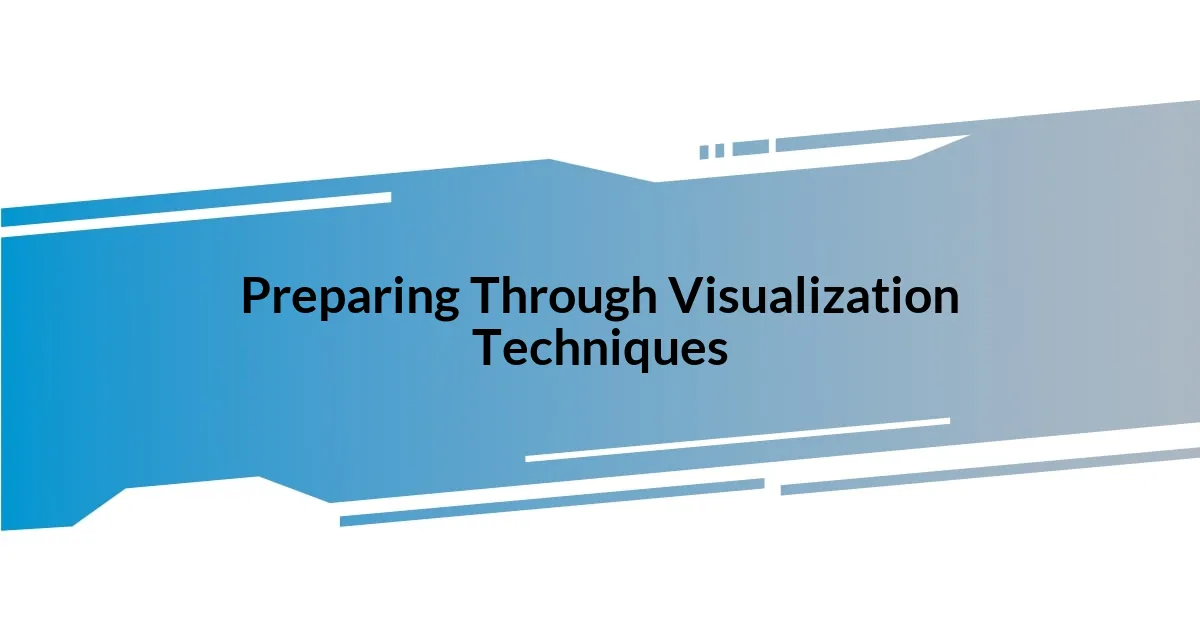
Preparing Through Visualization Techniques
Visualizing success was a game changer for me. I began to imagine myself on stage, surrounded by an encouraging audience rather than judgmental eyes. Each visualization felt richer with detail; I could see their smiles, hear the applause, and even feel the warmth of the spotlight. This mental imagery not only reduced my anxiety but also shifted my focus from fear to excitement. Have you ever tried picturing a successful performance before? It’s fascinating how our minds can create a safe space through positive imagery.
In my experience, I learned that incorporating all senses into my visualizations was incredibly powerful. I didn’t just see myself performing; I imagined the texture of the microphone, the sounds of the audience, and even the scent of the stage. This multi-sensory approach helped solidify my confidence. I often recall moments when anxiety tried to creep back in, but a quick mental theater performance redirected my thoughts. How vividly can you picture your own success?
The practice of visualization became an essential part of my preparation routine. I would spend quiet moments each day engaged in this technique, almost as if I were rehearsing in my mind. This consistency built a mental muscle that made on-stage situations feel more familiar and manageable. If you haven’t tried it yet, I encourage you to dedicate a few minutes each day to visualize your goals. You might find the experience transformative.
| Visualization Technique | Description |
|---|---|
| Success Imagery | Picturing a successful performance with details about the environment and audience reactions. |
| Sensory Engagement | Incorporating all five senses into visualizations for a richer experience. |
| Routine Practice | Consistently visualizing performance success to build familiarity and confidence. |
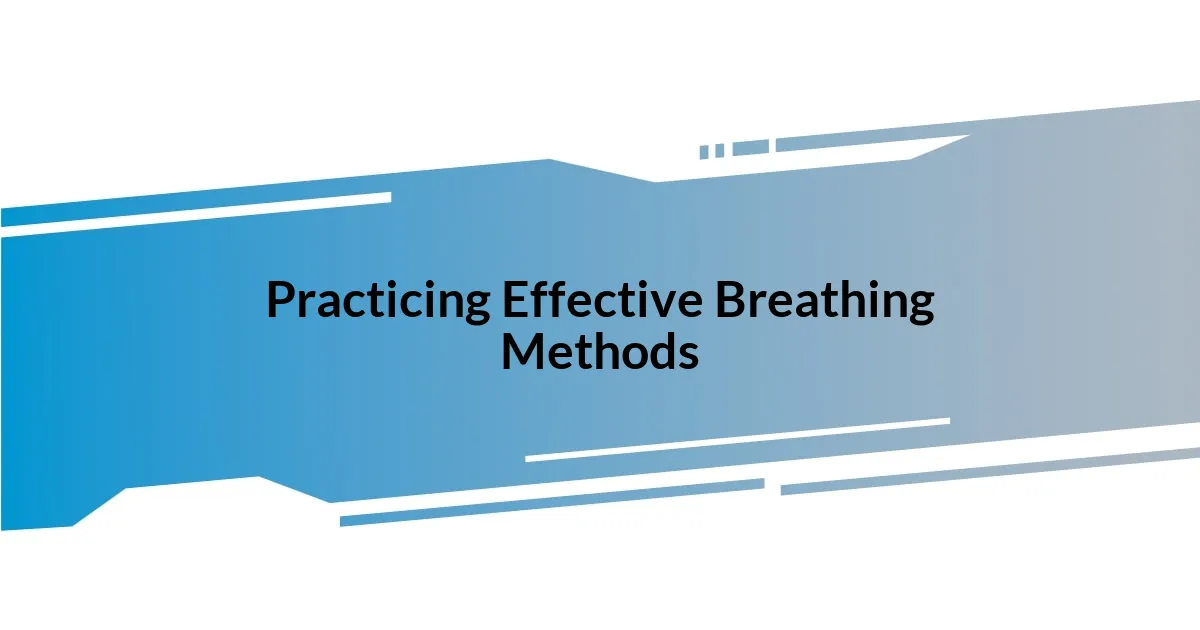
Practicing Effective Breathing Methods
Breathing methods became my lifeline during those nerve-wracking moments before stepping on stage. One technique I found particularly helpful was the 4-7-8 breathing method. You breathe in deeply through your nose for four seconds, hold it for seven, and then exhale slowly through your mouth for eight. This not only calmed my racing heart but also gave me a moment to gather my thoughts. Have you ever noticed how even one deep breath can change everything?
I remember a time when I faced an audience for a critical presentation. I stood backstage, feeling the familiar tightness in my chest. That’s when I started practicing the diaphragmatic breathing technique: inhaling deeply into my belly rather than my chest. With each breath, I felt the tension release, transforming my anxiety into a gentle excitement. It’s amazing how something as simple as breathing can ground your thoughts and regain focus, don’t you think?
After incorporating these breathing exercises into my routine, I experienced a significant shift. Instead of hyperventilating, I found myself centered and poised before every performance. It felt empowering. Every time I practiced, it was like training my body to remember that calmness amidst chaos. I now view these breathing techniques as essential tools, akin to a performer’s secret weapon against fear. How do you prepare your body before a big moment?
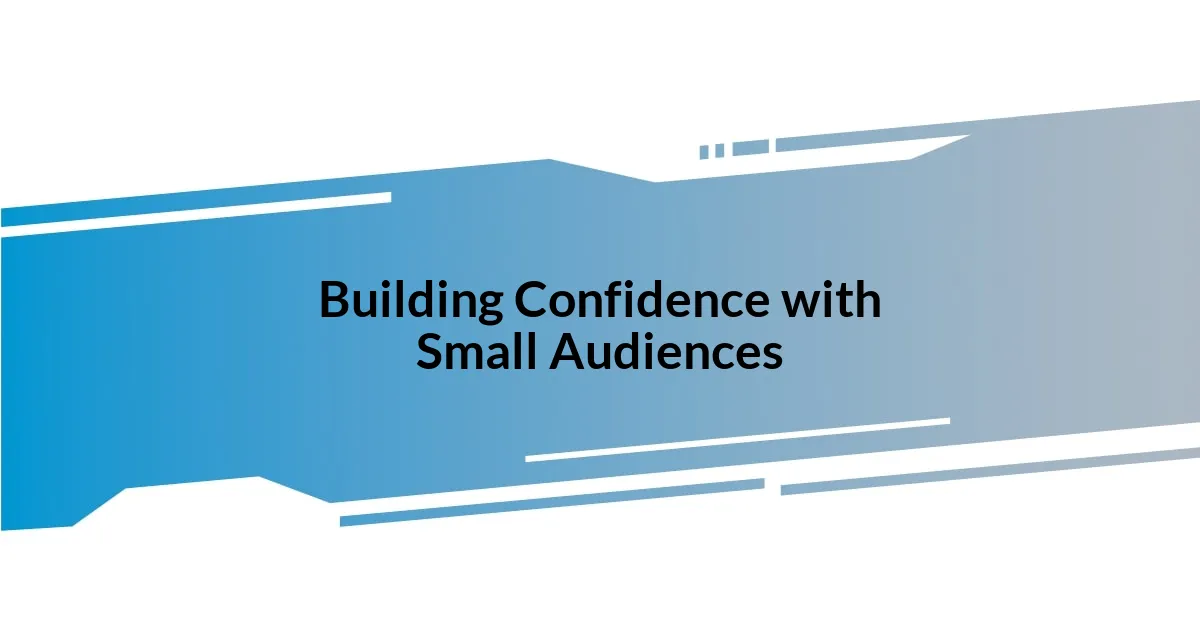
Building Confidence with Small Audiences
Starting small has been key in my journey to overcoming my fear of public performances. I remember the first time I spoke in front of a group of just five friends. My heart raced, but their supportive smiles were reassuring. This low-stakes environment allowed me to experiment, make mistakes, and learn without the pressure of a larger audience looming over me. Have you ever realized how much a familiar face can change the atmosphere?
As those intimate gatherings gradually morphed into opportunities for slightly larger audiences, I felt my confidence gradually swell. I recall the first time I presented at a team meeting with about ten colleagues. Instead of feeling like I was under a microscope, I started to view it as a conversation. It changed the dynamic for me; the fear of judgment transformed into an exciting opportunity for connection. How often do we underestimate the boost that comes from engaging with people who genuinely care?
With every small audience I faced, I discovered something new about myself. Each interaction sharpened my ability to read the room, connect through eye contact, and react to the audience’s energy, which became deeply fulfilling. I realized that public performance isn’t solely about delivering a perfect speech; it’s about forming relationships, even if they’re fleeting. Have you taken small steps that led to significant growth in your own experiences?
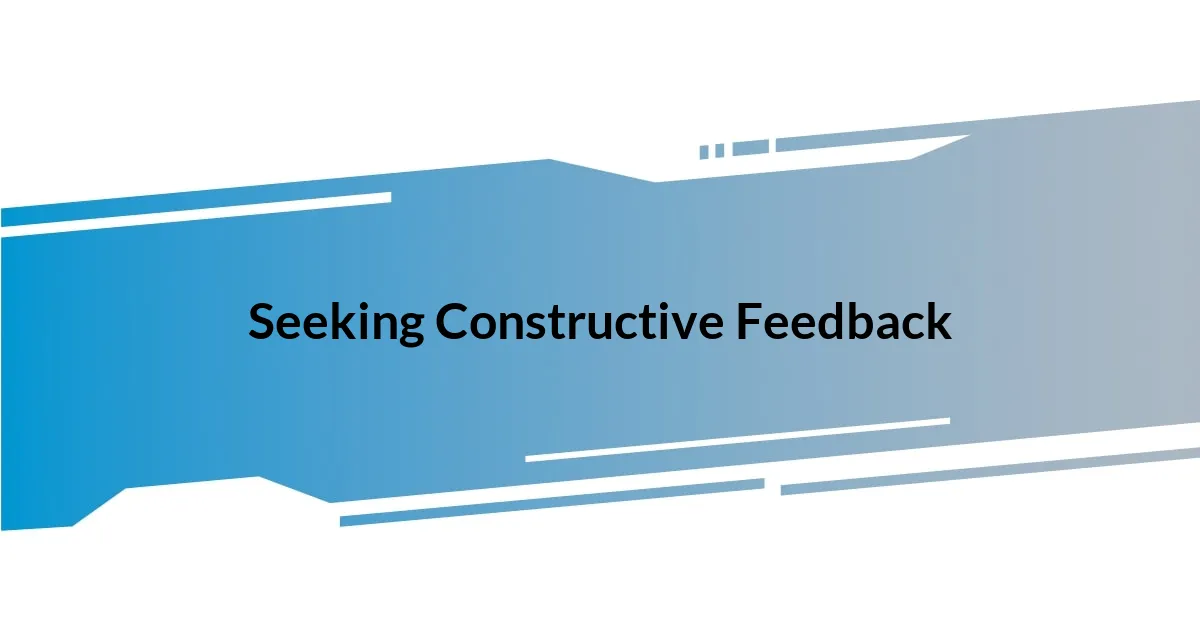
Seeking Constructive Feedback
Seeking constructive feedback has been a game changer for me in my quest to conquer stage fright. Initially, I was hesitant to ask for opinions on my performances, fearing criticism. But I quickly learned that constructive feedback, when approached positively, can illuminate blind spots I wasn’t aware of. Have you ever experienced a moment where a simple suggestion completely changed your perspective?
I remember a time after a presentation when a trusted friend offered their take. At first, my stomach knotted up at the thought of hearing how I had faltered, but their insights were invaluable. They highlighted my strengths while gently pointing out areas for growth. Instead of feeling deflated, I was motivated to refine my skills. That feedback felt like a lighthouse, guiding me through the murky waters of self-doubt. How often do we underestimate the help from others in our growth journey?
Engaging in feedback loops has since become a regular part of my preparation. I actively seek critiques from peers and mentors who understand my goals. With every conversation, I’ve built a richer understanding of what resonates with the audience. Sure, not every piece of feedback feels good, but I’ve learned to sift through it for the gems that lead to improvement. Isn’t it fascinating how feedback can be both a mirror and a compass, reflecting where we are and guiding us toward where we want to be?
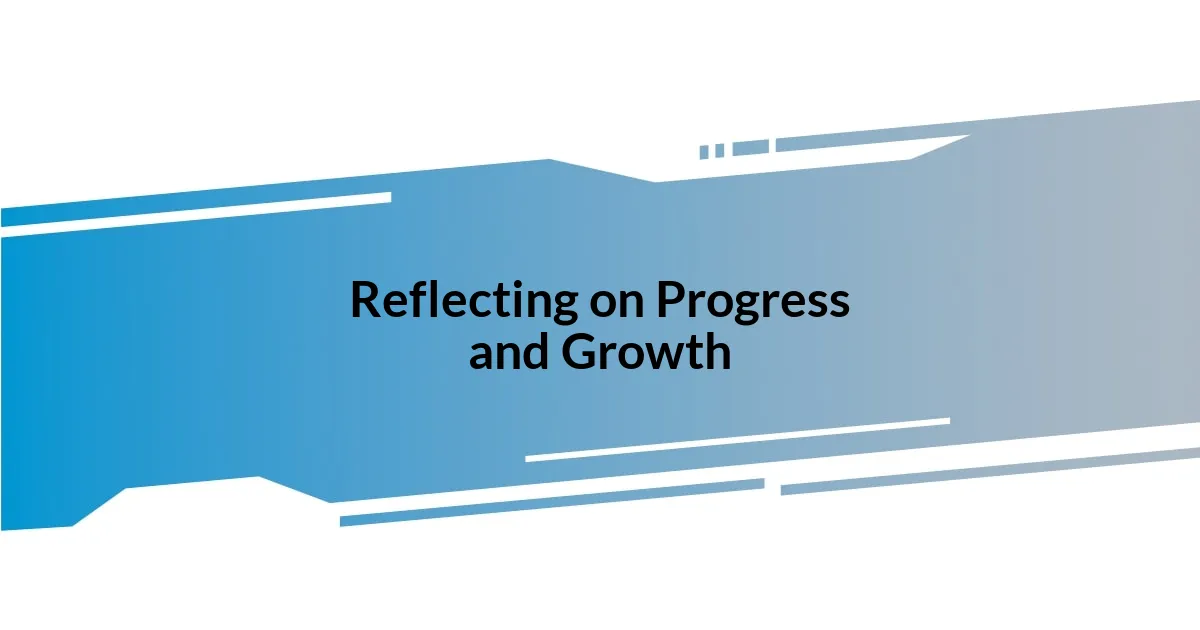
Reflecting on Progress and Growth
Reflecting on my journey has been a powerful exercise in recognizing just how far I’ve come. I vividly remember standing in front of a mirror, practicing my speech for hours, shaking with anticipation. But now, I can confidently recount how the nerves have lessened during those moments—almost like a forgotten ghost. Isn’t it amazing how consistent practice can shift your mindset from dread to anticipation?
Every time I look back at my early experiences, I can almost pinpoint the gradual changes that took place within me. Each presentation, no matter how small, added another layer of resilience. I recall one instance where I stumbled over my words in front of a larger audience, but instead of feeling defeated, I laughed it off and continued. In embracing those mishaps, I realized they were essential stepping stones on my path to growth. Have you had similar moments that turned into learning experiences?
What truly stands out to me is how my perception of public performance has transformed. Initially, I viewed it solely as a stage to face my fears, but now, I see it as a shared experience. I often think about the times I’ve connected with others after sharing stories or ideas. That sense of camaraderie has become my new comfort zone. Have you found that reflecting on these experiences helps elevate your growth journey?
